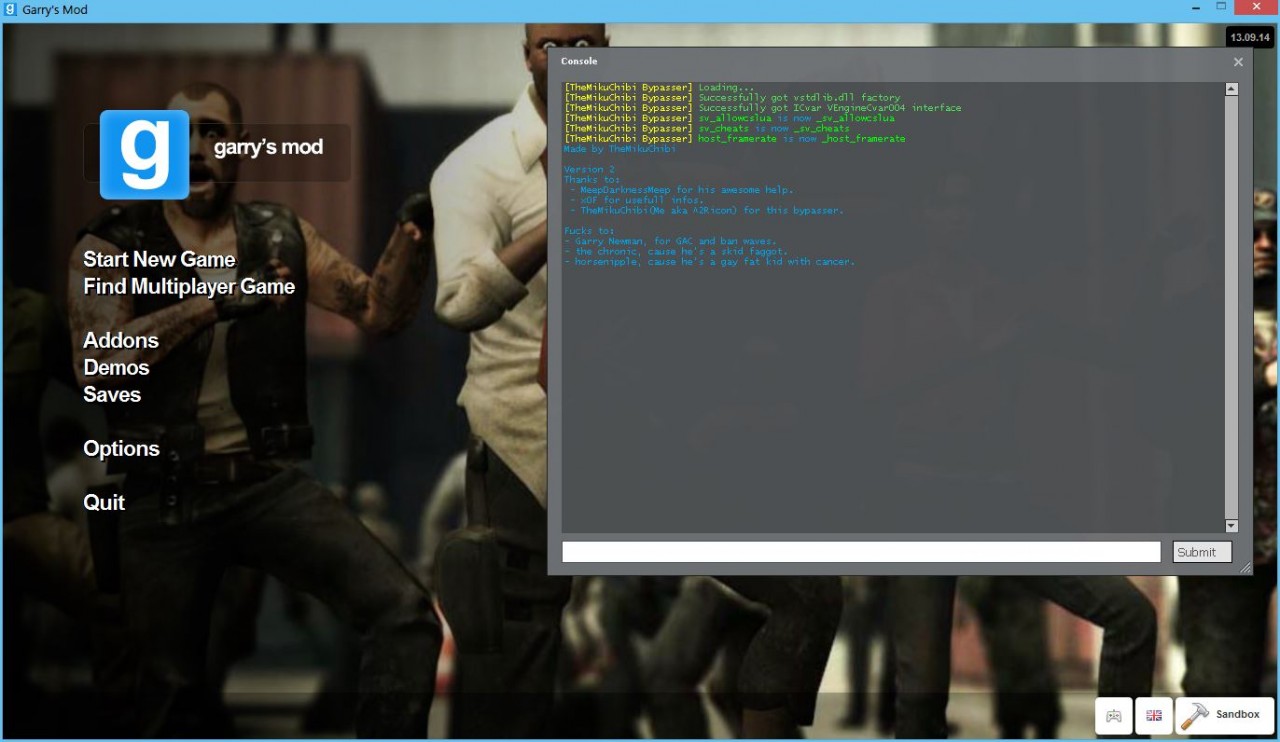
Upon opening it, GMad will begin extracting the addon’s contents.

You want to click on this file and, when your computer asks how you want to open it, you want to find GMad. Once you find your addon, there should be a GMA file. If there are multiple temp addons, you will either have to find a new addon or do process of elimination.

If your addon does not appear, some addons tend to just be named “temp”. The easiest way to quickly find your addon is by, again, searching. Upon opening this folder, you will see a list of numbers. Newer addons tend to be located in Steam>steamapps>workshop>content>4000. If you can not locate your addon in the addons folder, try searching in the next location. From here, simply search for the name of your addon. While still in your GarrysMod folder, navigate to GarrysMod>garrysmod>addons. It is important to note that your addon could be in one of two locations, with older addons being in the former and newer addons being in the latter option. This simply means that GMad has been activated and can now be used to export the contents of your addon. Upon opening it, a prompt will appear then disappear. It is normally located in Steam>steamapps>common>GarrysMod>bin. To get started, you need to activate GMad.
Gmod file read mod#
Through the use of Garry’s Mod built in GMad and the PAC3 editor, it is possible to port any model so that you can use it on any server, even if other users don’t have the addon itself. MDL files (with many tradeoffs), view the below section for Commander Dixie’s compression method. Congrats.įor a more simple way of porting. PNG link going into the Material field.Įverything should work out perfect! If you’ve successfully followed and completed these steps, you’ve mastered the most difficult type of porting. OBJ link going into the Model field, and the. This is what the end product should look like, the. Note that you must use Legacy Model in PAC3 unless you plan on compressing the files, which entirely removes the freedom of applying the ported textures we previously went over. PNG products, upload them to your Dropbox or other file hosting service. When exporting, make sure a different part is selected every time. Ensure that “Selection Only” is checked in the export menu, so you don’t have the entire scene being exported into one file. Now that all your parts are separated, you’re clear to export them as. Next you must enter Edit Mode by pressing Tab, and then pressing P to bring up the Separate menu. You can do this by first highlighting the part that has multiple materials listed. Now that the texture names are sorted out, you now need to separate the different parts so you can import them to PAC3 and apply the proper textures. VTF files? That’s what you need to convert. See how these names are identical to the. Expand the part until you see textures underneath it, such as here: In the Scene Collection in the upper right screen, it should contain all the parts of the model you imported. QC file which contains every part of the vehicle. Provided you installed the Source Tools Addon (installation instructions are included in the above linked wiki page), you should see this import option. Export it to a directory of your choosing, and you’re done! Blender Importing VTF filetype, so you can simply double click the file and view it from there.
Gmod file read install#
After you install it, VTFEdit should be automatically associated with the. Confused which ones you need? I’ll show you a super easy way in the Blender section of the tutorial. VTF files within the /materials directory of your selected addon. You most likely want textures on your models. QC file that includes every part of the model. SMD files, though there is typically only one. Once you get your settings adjusted, hit decompile! You will now have a select few files in your output folder, however you will only need the. These are the settings and boxes that should be ticked when decompiling.Ĭhange the MDL input to wherever your file is located, and change the output directory to wherever you please. Launch Crowbar and navigate to the Decompile tab. Usually there is only one included in the /models directory. When only value is nil, delete key value pair for given section.Continue reading in the “Convert/Decompile” section.

When both key and value are nil but section is not, delete section. When all three parametes are nil, no action at all. If temp ~= nil and u ~= temp then u = temp end If not file_exists(filename) then return ans end key/value pair table containing the corresponding pairs from the file. Read the whole configuration in a table such that each section is a key to You can read/write any such file and add, update, or delete entries depending on which parameters are left nil. (WARNING: Not tested 100% but seems to work.)


 0 kommentar(er)
0 kommentar(er)
